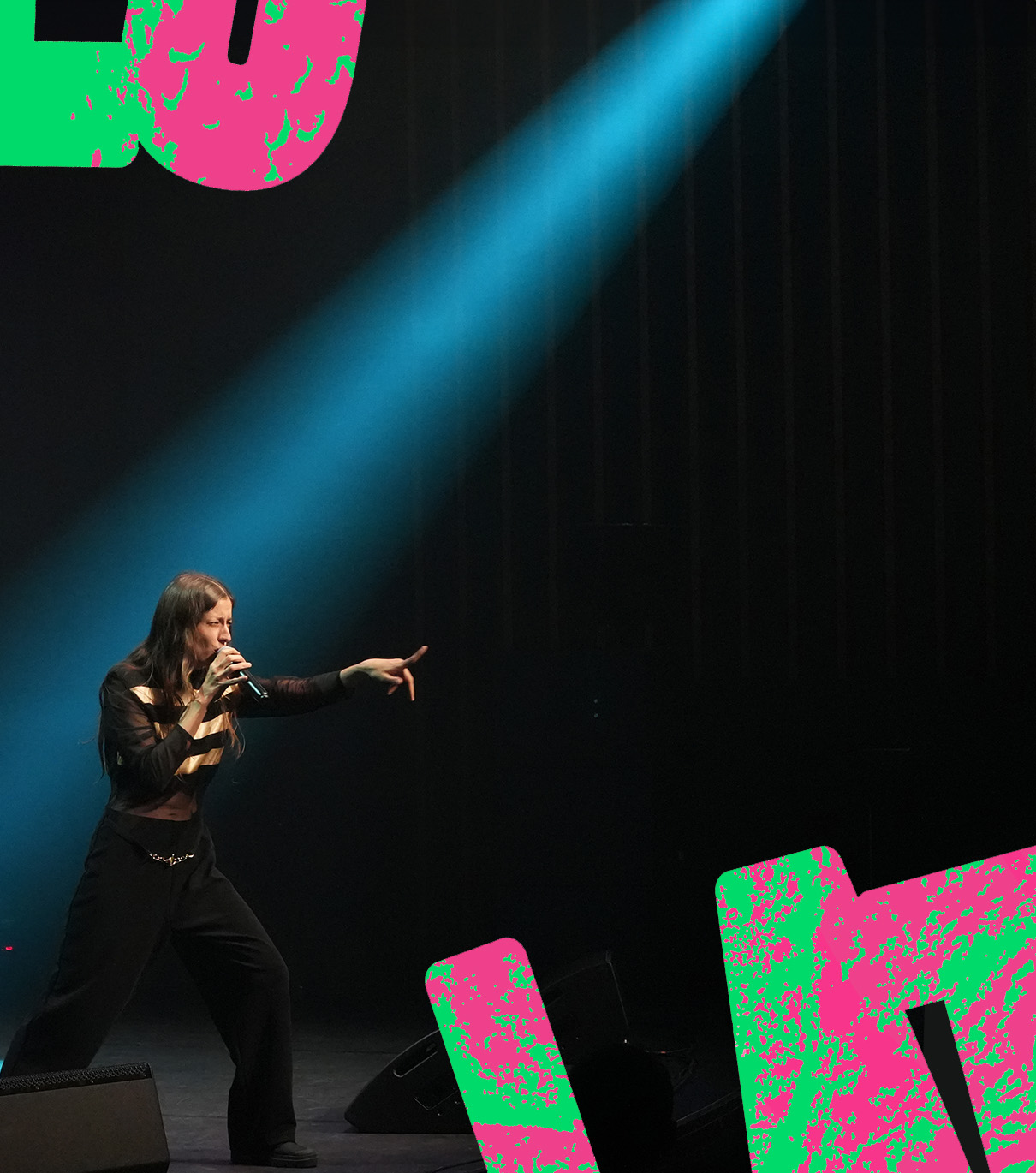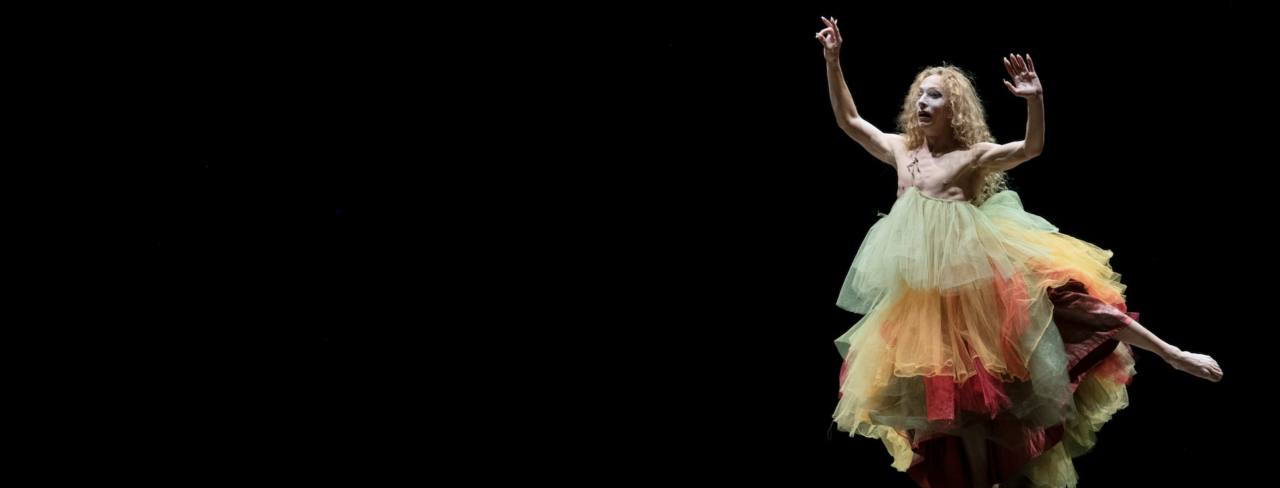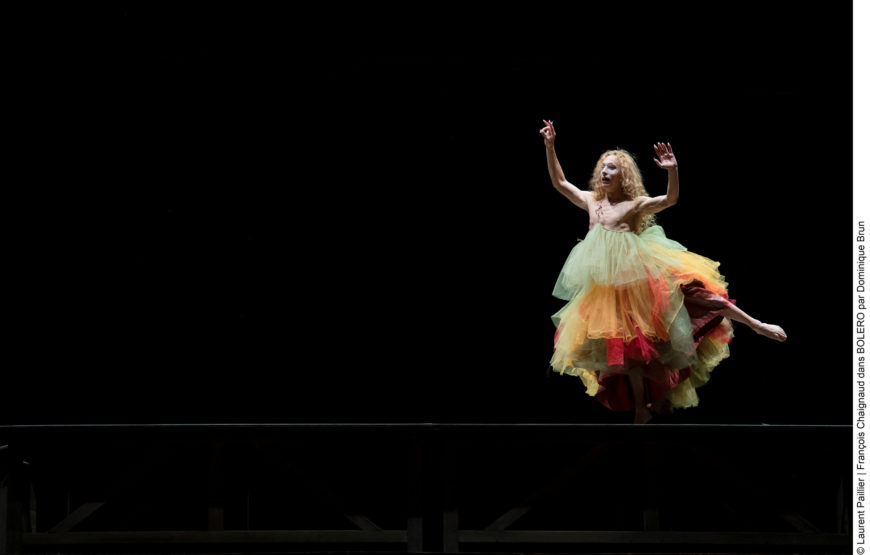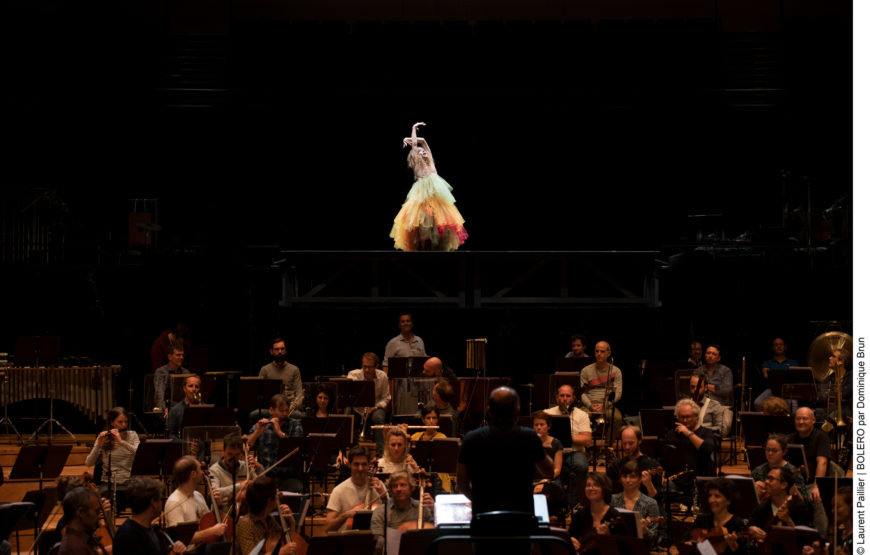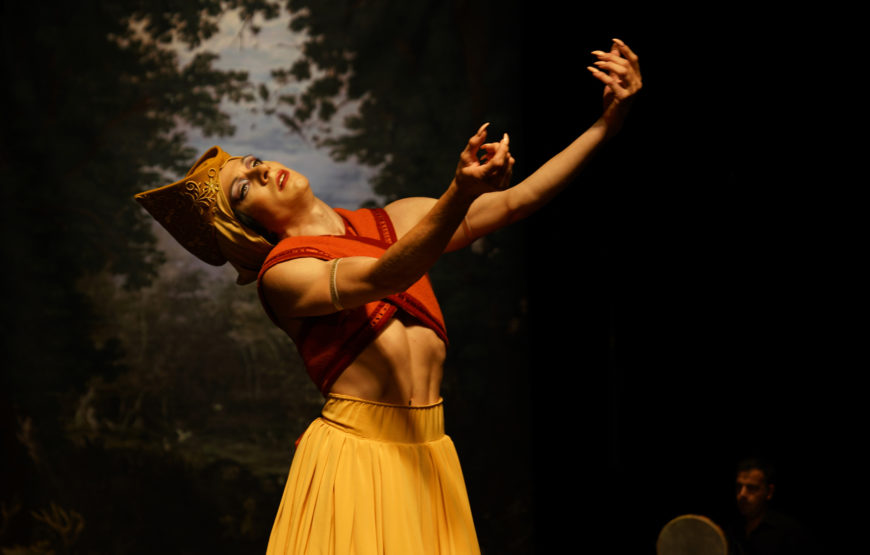Dominique Brun and François Chaignaud
+ More info- Live performance
- 30min
- maison Folie Wazemmes
UN BOLERO
In this latest creation, Dominique Brun revives the memory of Bronislava Nijinska, the first and only female choreographer of the Russian Ballet, experiencing her scenic topicality. Working with François Chaignaud, she reinvents the Bolero and confronts it with other memories, navigating between cultures and eras.
The bolero is a dance that appeared in Spain in the 18th century, and became The Bolero in 1928. Ida Rubinstein, dancer and muse of the Russian Ballet, commissioned the score for Ravel and the choreography for Bronislava Nijinska. It is with the partnership of François Chaignaud that Dominique Brun questions this work. Comparing the Bolero to other Spanish dances, to the dancer La Argentina, to the skirt dance of early 20th century and Tatsumi Hijikata’s Butoh. In flamenco as in butoh it meets the desire to question “the woman who rises in man.” Dressed in a long dress, the dancer alternates whirling, staccato of the foot, slow motion of the arms and torso: her body comes into resistance with the martiality of rhythm to better thwart the authority of music.
Biography(s)
Dominique Brun
Choreographer, dancer, teacher, and dance recorder in Laban notation, Dominique Brun co-founded the company La Salamandre (1980 to 1988) with which she obtenain the third prize at the international competition of Bagnolet (1981), “Le Ballet pour demain”, and she also co-founded the Quatuor Albrecht Knust (1994 to 2003), an ensemble with whom she worked on the recreation of dances from the historical repertoire, based on scores established in Labanotation. After the dissoltion of the Quatuor Albrecht Knust, Dominique Brun premiered Siléo (2004) from a text by Wajdi Mouawad and interwar dances signed by Valeska Gert, Kurt Jooss, Dore Hoyer, Doris Humphrey, Mary Wigman.
In 2007, Dominique Brun conceived and executed a pedagogical DVD devoted to The Afternoon of a Faun (1912) by Vaslav Nijinski. She reconstituted for the film Coco Chanel & Igor Stravinsky by Jan Kounen (2010) dance extracts of Nijinsky’s The Rite of Sping (1913) from the period’s archives.
Supported by L’Association du 48 directed by dancer and choreographer Sylvain Prunenec, she extends her research on the “Rite” with a diptych: Sacre # 197 (2012) and Sacre # 2 (2014). She concludes this cycle devoted to the work of Nijinsky with the creation of Jeux – Trois études pour sept petits paysages aveugles (2017). After comes Les Perles ne font pas le collier, which she co-signs and dances with Sylvain Prunenec (2018). Finally, she created Le Poids des choses & Pierre et le Loup, a choregraphed fable for both children and adults after Prokofiev’s work based on Rudolf Laban’s Effort system (2019).
Along with her research on movement, Dominique Brun developed an a special artistic taste for the relationships that are established between music and dance. In 2016, the meeting with the orechstra Les Siècles under the direction of François-Xavier Roth gave rise to a project Hommage à Nijinski which turns form the Philharmonie of Paris to China.
Dominique Brun turned today to Bronislava Nijinska through the revival of two iconic pieces. Based on a reading to the archives, she takes up Les Noces and reinvents le Bolero. From the reactivation of the archives to their performative updates, the program pays tribute to an avant-garde choreographer, influenced by the constructivism and modernism of her famous brother Vaslav Nijinski.
François Chaignaud
Born in Rennes, François Chaignaud studied dance from the age of six. He earned a diploma in 2003 from the Conservatoire National Supérieur de Danse de Paris, collaborating soon after with several choreographers, notably Boris Charmatz, Emmanuelle Huynh, Alain Buffard, and Gilles Jobin. From He’s One that Goes to Sea for Nothing but to Make him sick (2004) to Думи мої (2013), he has created performances in which dance and singing intersect, in a wide variety of environments and at the meeting points of many inspirations. From this tension, the possibility of a body takes shape, inhabiting the space between the sensual rigour of movement, the evocative power of singing, and the convergence of heterogeneous historical references — from erotic literature (Aussi Bien Que Ton Cœur Ouvre Moi Les Genoux, 2008) to sacred art. Also historian, François Chaignaud published L’Affaire Berger-Levrault: le féminisme à l’épreuve (1898-1905) with PUR. His curiosity for history has driven him to initiate various collaborations, notably with legendary drag queen Rumi Missabu of the Cockettes, cabaret performer Jérôme Marin (Sous l’ombrelle, 2011), artist Marie Caroline Hominal (Duchesses, 2009), fashion designers Romain Brau and Charlie Le Mindu, visual artist Théo Mercier, photographer Donatien Veismann and videast Cesar Vayssié. Chaignaud has been commissioned to create a film installation for 24 FRAMES per second in CarriageWorks Sydney.
In collaboration with artist Nino Laisné, he has created a piece entitled Romances inciertos: un autre Orlando, bringing together four instrumentalists around various ambiguous motifs of genre from the choreographic and vocal Iberian repertoire. The piece has been shown as part of the 2018 programme of the festival d’Avignon. In 2018 François Chaignaud also choreographed Soufflette, a piece for the Carte Blanche Ballet (Norway) in collaboration with Romain Brau premiered in May in Studio Bergen.
His latest creation Symphonia Harmoniæ Cælesitum Revelationum is a research on the Antique Christian song repertoire as well as Hildegard Von Bingen conceived in collaboration with Marie-Pierre Brébant. The show premiered in May 2019 at the Kunstenfestivaldesarts, Brussels. His upcoming projects include collaborations with notably: Akaji Maro, Dominique Brun and Les Siècles orchestra and a new collaboration with Geoffroy Jourdain and vocal ensemble Les Cris de Paris.
Credits
Distribution :
Choreography : Dominique Brun and François Chaignaud
Assistant to : Dominique Brun Judith Gars
Historical research: Dominique Brun and Sophie Jacotot
Photographs from the archives: Ivan Chaumeille
Interpretation of the dance: François Chaignaud
Music: Maurice Ravel (version for piano four hands)
Interpretation of the music: Sandrine Le Grand and Jérôme Granjon (piano)
Costume : Romain Brau
Set design : Odile Blanchard – Atelier Devineau
Lighting : Philippe Gladieux
Technical director: Christophe Poux
Credits and mentions :
Production : Les porteurs d’ombre
The association Les porteurs d’ombre is supported by Le Ministère de la Culture / Drac Ile-de-France as a subsidized company
Coproduction : Association du 48 | Le Volcan, Scène Nationale du Havre | Chaillot – Théâtre national de la Danse | Les 2 Scènes – Scène nationale de Besançon | Théâtre du Beauvaisis – Scène nationale| Le Quartz – Scène nationale de Brest | Théâtre Louis Aragon, Scène conventionnée d’intérêt national Art et Création – Danse de Tremblay-en-France | Ménagerie de Verre (Paris) | CCN Ballet de Lorraine | La Briqueterie – CDCN du Val-de-Marne | Le Grand R – Scène nationale La Roche sur Yon | Cité musicale-Metz | CCN in the framework of Danse en Grande Forme | Les Quinconces-L’Espal Scène nationale du Mans | Théâtre de Suresnes Jean Vilar
With the support of : Fonds de dotation du Quartz (Brest)


